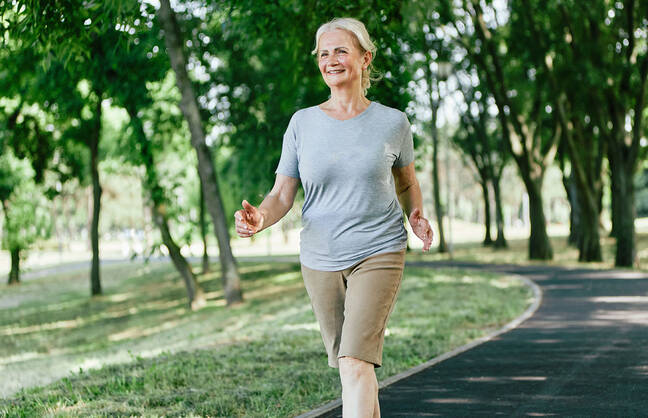Everyday Activities Highlight the Importance of Balance
Taking a shower, grocery shopping, moving around the kitchen, and getting dressed—what do these everyday activities have in common? Balance.
Geriatricians emphasize that maintaining good balance is essential for preserving independence as we age.
In the U.S., about 3 million older adults require medical care for fall-related injuries annually, according to the CDC.
However, falls are not inevitable, said Roopa Anmolsingh, a geriatrician and founder of Cleveland Clinic’s balance classes.
“Some people think getting older means you’ll fall. That’s not true,” Anmolsingh explained. “You can control how you fall—or even prevent it.”
To reduce fall risks, experts recommend assessing balance and taking preventive steps as early as age 50.
Questions to Ask About Your Balance

Do I ever feel unsteady?
Feeling unsteady, even occasionally, warrants a doctor’s evaluation. Balance depends not only on muscles and bones but also on blood pressure, medications, inner-ear function, and the nervous system. A medical assessment can help identify and address any underlying issues.
To assess balance at home, try these tests:
- Single-Leg Balance Test: Stand near a wall for support and lift one leg. If you can balance on each leg for 10 seconds, your balance is likely adequate. Difficulty indicates the need for further evaluation, said Greg W. Hartley, a physical therapy professor at the University of Miami.
- Timed Up and Go (TUG) Test: Sit in a chair, stand up, walk 10 feet (3 meters), return, and sit down. Time yourself. More than 15 seconds suggests a high fall risk; 12 seconds or less indicates low risk.
The National Council on Aging also offers online tools to assess fall risks, considering factors like medications, curb navigation, and fear of falling.
Steps to Improve Balance
Why balance declines and how to counteract it
Muscle mass starts decreasing in the 30s, making regular physical activity crucial. However, it’s never too late to start, said Anmolsingh.
Activities like tai chi and yoga are ideal for older adults as they involve slow, controlled movements that enhance balance.
Simple exercises to incorporate into daily life:
- Stand on one foot while waiting in line.
- Chair stands: Sit and stand repeatedly without using armrests.
- Three-way leg lifts: Hold onto a chair for support and lift each leg to the front, side, and back.
- Side steps: Take steps sideways along your kitchen counter.
How Often Should You Exercise?
For overall physical activity, the National Institute on Aging recommends at least 150 minutes of weekly exercise, including:
- Stretching for flexibility.
- Aerobic activities to boost heart health.
- Strength training using weights or resistance bands.
For balance-specific exercises, consistency is key. Geriatricians suggest at least 50 hours of balance training to see measurable improvement.
Regular practice strengthens muscles and trains the brain to respond effectively to slips or trips.
“Just as athletes use repetition to train, balance exercises prepare you for daily life,” Hartley said.
By prioritizing balance and physical activity, you can maintain your independence and reduce the risk of falls.
Start small, stay consistent, and consult professionals if needed to ensure a healthy, active lifestyle as you age.
Albert Stumm writes about wellness, food, and travel. Find more of his work at Albert Stumm’s website.







Leave a Comment